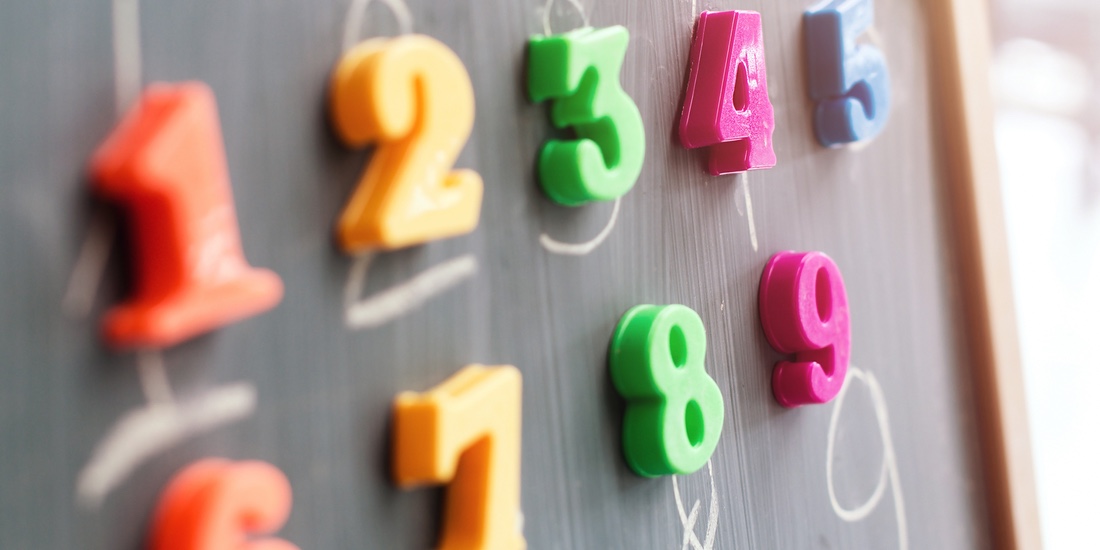Take every opportunity to count…anything, everything! It may feel common sense to us grown-ups, but fluency in talking about numbers prepares children for more complex math learning in the future. Make talking about numbers part of your everyday.
Learn
Basic Concepts
- “Talking numbers” is a linguistic activity, not a mathematical activity of logical thinking and counting (where numbers represent quantity).
- Children learn to count up and backwards before they understand numerical quantities and relationships.
- Children will memorize counting up before they memorize counting down.
- Once children can fluently count backwards, we know that they understand the reversibility of counting backwards and the permanence of the number line. Numbers go up the same way that they go down.
- Children often get stuck crossing a decade backwards, like 22, 21, 20, 19. They will often make the mistake of counting “22, 21, 20, 29”. Do not correct them! And do not ask them to solve this problem “by thinking”. Just model correctly and invite them to join you.
- Crossing 11, 10, 9 precedes starting in the 20s. From there, children quickly understand all the way to 100.
- Start with counting backwards starting at 12 and say, “12, 11, 10, 9, 8…” and then work your way up to 22 and 32, and count backwards.
- Everyday words that support math learning include: before, after, more, fewer, skip, between, larger, smaller, half, one-and-a-half, dozen, first, second, etc.
Just Remember
- Being comfortable in the language of numbers is a helpful foundation for more complex math learning to come.
- Invite your child to join you when counting – make it fun, do it together. Remove the pressure to perform to mitigate an early aversion to math.
- For example, you could say, “Let’s count the bananas together, Jack!” instead of “Count the bananas, Jack.”
Do
- Seize every chance to count things in your day – fruits, eggs, flowers, etc. Model this and invite your children to join in, but don’t require it.
- “How many red cars can you spot before we get to the grocery store?” Count alone and loudly if your child refuses to join in.
- Count as if you are chanting and singing – especially easy to do in the car.
- Sesame Street – 1,2,3,4 with Feist – Kids *love* this video.
- Count Dracula and his Number of the Day make things fun.
- Count backwards: “Count down”. Start with small numbers under 10, continue onto larger and larger numbers.
- “I’m going to count down from 20 and see who has their pajamas on when I get to 0!”
- “Let’s take some deep breaths in our Mindful Minute – 5-4-3-2-1…exhale.”
- “I feel myself getting into the red. I’m going to take 3 deep breaths and find a Cozy Corner – 3 (inhale, exhale), 2 (inhale, exhale), 1 (inhale, exhale).”
- Use mathematical words in everyday conversation.
- “There are 20. What number comes before 20?”
- “Where would I cut this cake to get half of the cake?” Take a moment to write ½ and show your child.
- “I have fewer raisins than you do? How many raisins do you have?”
Bonus!
Remember these? Share them with your child and make counting fun.
